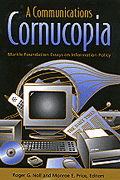Executive Summary
The first day of my mass media class at Brown University in Spring 2008, I asked the 100 students who were present how many believed the news media were doing a good job covering that year’s presidential campaign. Only two hands shot up. Nearly all the others believed the press was performing abysmally. And this was before coverage of the Rev. Jeremiah Wright, Bill Ayers and Sarah Palin generated vociferous complaints from the left and the right about media unfairness.
It is a depressing time to be in the news business. Not only do students at elite universities rate the news media poorly, many journalists are losing their jobs. A declining economy has placed enormous fiscal pressures on news organizations around the globe. The simultaneous declines in ad revenues and circulation levels have undermined the traditional business model of newspapers, radio and television. At the same time, the emergence of new competitors in the form of Internet web sites, blogs, Facebook, YouTube and Twitter have intensified the competition among media outlets.
This “perfect storm” of financial disaster for the American media arises at an inopportune time. With our financial system melting down, two wars and major domestic policy challenges confronting the nation, we need media organizations that inform the public. During this period of crisis, an informed and engaged citizenry is of utmost importance.
The latest round of dismal financial news has led to impassioned discussions regarding the future of the American news media. Aspen Institute CEO Walter Isaacson wrote a cover story for Time magazine on the embattled state of print journalism entitled “How to Save Your Newspaper.” Paul Starr has a New Republic article with the dire warning of “Goodbye to the Age of Newspapers (Hello to a New Era of Corruption).” John Nichols and Robert W. McChesney co-authored an article for the Nation, “The Death and Life of Great American Newspapers.” Others such as former reporter Tom Rosenstiel have warned of threats to civic discourse and democratic government based on the decline of traditional journalism.
There is no question we are witnessing a fundamental economic and technological transformation of journalism. Traditional business models are dying and new ones still are being developed. Increasingly, news consumers have shifted from a few general-purpose sources such as the evening television news and local newspaper to a larger number of niche publications and specialized news sources. Similar to a culinary smorgasbord, people graze business news from one source, weather from another, sports from still another, politics from someplace else, and commentary from other outlets.
In this multi-faceted, new-media universe, we need an information strategy for the news industry that expands upon the strengths of digital media such as diversity, immediacy and interactivity, while encouraging in-depth coverage. As discussed below, there are several steps in regard to digital payments, news presentation and changes in antitrust and tax laws to make sure our new digital press achieves its full potential.



